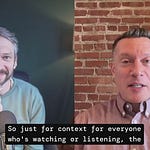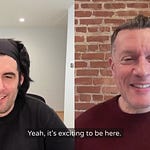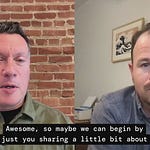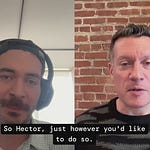When Emma Wyatt joined Grammarly, the company was already beloved by millions—but hadn’t yet built a dedicated space for its top advocates to connect, collaborate, and contribute. That was the opportunity she stepped into.
As Grammarly’s Community Manager, Emma launched and scaled the Grammarly Collective, a program designed to bring Grammarly’s champions together around shared goals. Her journey into community wasn’t a straight line—she came from a background in tourism and hospitality—but it gave her a unique lens on customer connection, experience, and care.
In this interview, Emma shares what it took to get buy-in, define success metrics, and turn feedback into fuel for growth. She also opens up about the realities of scaling community from scratch: the challenges, the rewarding moments, and why celebrating the small wins matters more than you might think.
From stakeholder alignment to everyday engagement
If you’ve ever launched a community program inside a company that’s never had one before, you’ll recognize a lot in Emma’s story. She walks through the initial alignment and planning stages—highlighting just how long it took to get to launch—and explains how she made the case internally for community’s long-term value.
She also breaks down the evolution of the Grammarly Collective post-launch, including how recruitment strategies have shifted, what kinds of engagement initiatives have worked best, and why feedback mechanisms have been critical for continuous improvement.
Emma’s story is also a good reminder that even when your company has a strong brand and loyal fans, building a thriving community still takes time, iteration, and patience.
And in a fun twist of timing: Grammarly recently acquired Coda. I’ve interviewed two community leaders from Coda as well, and those interviews will be featured in upcoming Community Codebreakers posts.
Key Takeaways
Stakeholder alignment takes time—but without it, community programs risk stalling before they start.
Feedback loops aren’t just helpful—they’re foundational. Community strategy should evolve with member input.
Your earliest members set the tone. Thoughtful recruitment and onboarding matter more than mass invites.
Engagement tactics don’t need to be complicated. Challenges, prompts, and simple conversations go a long way.
Internal visibility can be a challenge. Keep showing impact in language the business understands.
Celebrate the small wins. Community-building is rarely linear, and momentum matters.
Decoded Insight
A successful community doesn’t start with a flashy launch—it starts with patient planning, stakeholder buy-in, and a deep understanding of what members need to thrive.
Want to connect with Emma?
Reach out to her on LinkedIn. And if this interview sparked ideas or reflections, feel free to leave a comment or share the post with someone who’d find it useful.
Timestamps
00:00 – Introduction to Community Management
02:39 – Defining Community and Personal Experiences
05:33 – Building the Community Program at Grammarly
08:24 – Gathering Input and Initial Planning
11:10 – Launching the Community Program
14:08 – Scaling and Evolving the Program
17:08 – Internal Awareness and Stakeholder Engagement
23:26 – Building Community Foundations
25:40 – Feedback Mechanisms and Community Engagement
28:41 – Adapting Programs to Business Needs
31:28 – Scaling Community Programs
34:20 – Navigating Challenges and Failures
37:26 – Demonstrating Community Value
39:49 – Recruitment and Engagement Strategies
43:48 – Advice for Aspiring Community Managers









